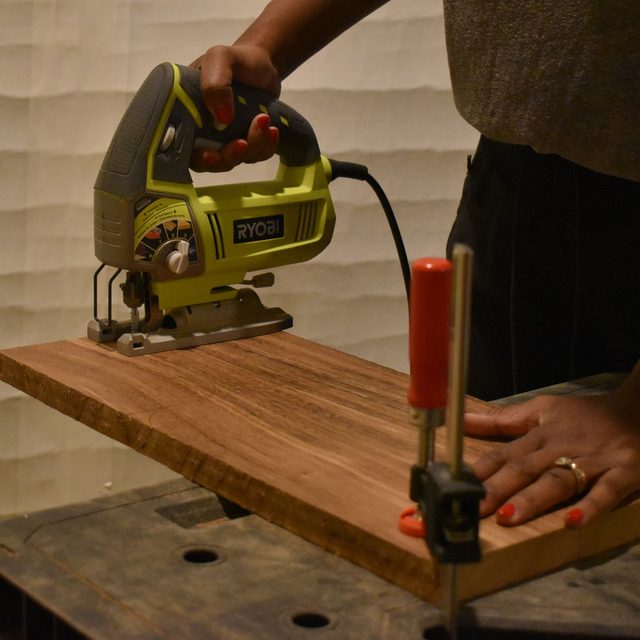How To Make a DIY Charcuterie Board
Create this high-end looking charcuterie board with beginner tools and easy-to-find materials.
Our editors and experts handpick every product we feature. We may earn a commission from your purchases.
A half day
Beginner
$20-50
Introduction
Create this high-end looking charcuterie board with beginner tools and easy-to-find materials.Tools Required
- Clamps
- Electric sander with 80-grit and 220-grit (or higher) sandpaper
- Jigsaw
- Lint-free rag
Materials Required
- Butcher block oil
- Close-grain hardwood board
Project step-by-step (4)
Draw the shape and design
- Start with a close-grain hardwood board with a minimum thickness of 3/4-in., and minimum width of eight inches. Walnut, maple and cherry are good choices and cost roughly $20 to $30 per board.
- Draw the charcuterie board shape on your piece of wood. Minimum recommended dimensions are an 8-in. x 12-in. rectangle with a 2-in. x 5-in. handle, though this board can be made in various sizes.
- Creative and non-uniform shapes are encouraged with this type of project.
- Trace around the rim of a glass or cup to add uniform curves near the handles and edges of the design.
Cut the shape
Clamp the board to your work surface and use a handheld jigsaw to cut out the shape.
Sand and clean
Sand the entire surface of your board with an electric sander to remove any rough grain and soften the edges of the board.
-
Start with a low-grit sandpaper (maximum 80-grit).
-
Once the wood is smooth and the edges are softened, use the electric sander to sand again with 220-grit sandpaper or higher to give the board a smooth finish.
- After sanding, wipe down your work surface and charcuterie board with a damp cloth to remove any residual dust and debris. The board must be clean and free of any dust and lint before moving to the next step
Seal
Seal the charcuterie board with butcher block oil following the package instructions.
- Drying time average is six hours per coat.
- Some oils require a second coat and additional drying time.
- Allow the oil to fully cure before using your beautiful new charcuterie board.





